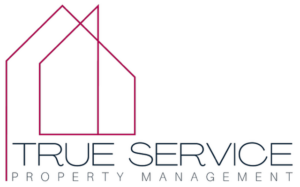Protect Your Health and Home
Luxury homes require an elevated level of care and attention, especially when managing dust. Dust might seem like a minor inconvenience, but it’s a significant concern in luxury properties that can affect both health and home. Dust can come from various sources, including outdoor pollutants, pet dander, and even household activities.
Estate Managers and other private staff understand that maintaining a pristine environment goes beyond aesthetics. This post will explore why dust is more than just a nuisance and how it can impact both people and property.
The Health Impacts of Dust
Indoor Air Quality
High dust levels can degrade indoor air quality, leading to potential respiratory issues. Dust particles can carry allergens, bacteria, and other harmful substances, which, when inhaled, can compromise the respiratory system.
Allergies and Respiratory Issues
Dust mites, a common component of household dust, can trigger allergic reactions and exacerbate asthma symptoms. Individuals with pre-existing respiratory conditions are particularly vulnerable to the effects of dust, making it crucial to maintain a dust-free environment.
Skin Irritation
Fine dust particles can cause skin irritation or exacerbate conditions like eczema. Prolonged exposure to dust can lead to itching, redness, and other dermatological issues.
How Dust Affects Luxury Properties
HVAC Systems
Dust can clog filters and ducts, leading to inefficiencies and costly repairs. A dust-laden HVAC system works harder to circulate air, increasing energy consumption and shortening the lifespan of the system.
Enhancing Comfort
A clean home is not only visually appealing but also more comfortable for you and your guests. Dust-free environments contribute to a sense of luxury and well-being.
Damage to High-End Furnishings
Dust can settle on and damage expensive furniture, artwork, and flooring. Over time, dust can cause scratches, dullness, and degradation of high-end materials.
Maintenance Costs
Regular dust buildup increases maintenance and cleaning expenses. Keeping dust at bay requires frequent and thorough cleaning, which can be costly and time-consuming.
Best Practices for Managing Dust in Luxury Properties
Regular Cleaning
Implement a routine cleaning schedule using HEPA filters and microfiber cloths to capture fine dust particles. Regular dusting and vacuuming are essential to prevent dust accumulation.
Air Purifiers
Invest in high-quality air purifiers with HEPA filters to improve indoor air quality. We recommend models like those from AprilAire for general purification and iWaveR for additional protection against viruses, bacteria, and odors.
HVAC Maintenance
Schedule regular HVAC inspections and change filters to ensure efficient air circulation. Investing in advanced filtration systems can significantly reduce dust circulation within the home.
Control Humidity Levels
To minimize dust mite populations, maintain indoor humidity between 30% and 50%. Humidifiers and dehumidifiers can help achieve and maintain optimal humidity levels.
Best Tools for Regular Dusting
When it comes to maintaining cleanliness in private service settings, using the right tools for dusting is crucial. According to Real Simple’s comprehensive guide on the best dusters of 2024, several top-rated tools can significantly improve efficiency and effectiveness in dusting tasks.
Here are some of the best dusting tools recommended:
- Swiffer Dusters: Disposable. Known for their ease of use and effective dust-trapping capability.
- Microfiber Cloths and Dusters: Ideal for delicate surfaces and intricate items, offering a gentle yet thorough cleaning.
- Ostrich Down Feather Dusters: A traditional tool of the trade, ensures comprehensive cleaning.
- Extendable Dusters: Perfect for reaching high and difficult spots.
Incorporating high-quality tools into your cleaning regimen will not only enhance the quality of service but also demonstrate a commitment to maintaining an impeccable household environment.
Green Filter Systems
In the pursuit of maintaining pristine luxury properties, the focus often lies on cleanliness and aesthetics. However, sustainability is becoming an increasingly important consideration. One effective way to combine these priorities is by integrating green filter systems, specifically those that utilize reusable, washable filters. These systems contribute to a cleaner home environment and support eco-friendly practices by reducing landfill waste.
The Environmental Impact of Disposable Filters
Traditional disposable filters, commonly used in HVAC systems and air purifiers, have a significant environmental footprint. These filters are typically made of materials that do not decompose quickly, contributing to landfill waste. Moreover, the frequency with which these filters must be replaced results in a continuous cycle of waste generation.
Landfill Waste Reduction
Reusable filters, on the other hand, offer a sustainable alternative. By utilizing filters that can be washed and reused, luxury homeowners can drastically reduce the amount of waste sent to landfills. Over time, this practice significantly lowers the environmental impact of maintaining a clean indoor environment.
Benefits of Washable Filters
Cost-Effectiveness
While the initial investment in washable filters may be higher than that of disposable filters, the long-term cost savings are substantial. With proper maintenance, reusable filters can last for years, eliminating the need for frequent replacements and thereby reducing overall costs.
Superior Performance
Washable filters often perform better than their disposable counterparts. They are designed to effectively capture fine dust particles, allergens, and pollutants, ensuring better indoor air quality. Regular cleaning of these filters maintains their efficiency, ensuring optimal performance of HVAC systems and air purifiers.
Health Benefits
Reusable filters contribute to better health outcomes for the occupants of luxury properties by maintaining cleaner air through effective filtration. Reduced exposure to dust, allergens, and pollutants can lead to fewer respiratory issues, allergies, and skin irritations, enhancing residents’ overall well-being.
Maintenance of Washable Filters
Regular Cleaning Schedule
Establishing a regular cleaning schedule is essential to ensuring the longevity and effectiveness of reusable filters. Depending on the level of dust and pollutants in the environment, filters should be cleaned every 1-3 months. This routine maintenance helps retain their filtration efficiency and extend their lifespan.
Proper Cleaning Techniques
Proper cleaning techniques are crucial for maintaining the integrity of washable filters. Most filters can be cleaned using a gentle stream of water followed by air drying. Avoid using harsh chemicals or high-pressure water, as these can damage the filter material. For specific cleaning instructions, always refer to the manufacturer’s guidelines.
Monitoring Filter Condition
Inspecting reusable filters regularly for signs of wear and tear is essential. Over time, even washable filters may need replacement if they become too worn out or damaged. Monitoring a filter’s wear ensures that it continues to provide optimal air quality and system performance.
Integration with Smart Home Systems
Automated Alerts
Modern luxury homes increasingly incorporate smart home technologies. Integrating reusable filter systems with these technologies can enhance maintenance efficiency. For instance, smart HVAC systems can be programmed to send automated alerts when filters need cleaning or replacement, ensuring timely maintenance.
Energy Efficiency
When maintained properly, reusable filters contribute to HVAC systems’ energy efficiency. Clean filters allow for better airflow, reducing the strain on the system and thereby lowering energy consumption. This not only helps reduce utility bills but also supports the sustainability goals of luxury homeowners.
Case Study: Successful Implementation
Consider a luxury property that transitioned from disposable to washable filters. By adopting this change, the property saw a notable reduction in maintenance costs and a significant decrease in landfill waste. The HVAC system’s performance improved due to better airflow, and the indoor air quality was markedly enhanced. This case exemplifies the practical benefits of integrating reusable filter systems in luxury properties.
Conclusion
Dust might be inevitable, but the right strategies can effectively manage its impact. Effective dust management is essential for maintaining the elegance and comfort of luxury properties. Incorporating green filter systems with washable filters is a forward-thinking approach to maintaining luxury properties. It aligns with the growing emphasis on sustainability without compromising the cleanliness and comfort expected in high-end homes. Reusable filters offer a comprehensive solution that benefits both the environment and the residents by reducing landfill waste, lowering maintenance costs, and improving indoor air quality.
By Peter Mueller of True Service Property Management

© 2024 Private Service Alliance, all rights reserved




